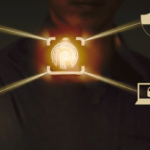How to use emotions and psychology in a logo
- 0
In the fast-paced and competitive world of business, where brands constantly vie for attention, a logo becomes much more than a mere symbol—it evolves into a gateway to emotions, memories, and associations. A well-designed logo has the remarkable ability to transcend its visual form and tap into the intricate realms of human psychology. This intersection of design and psychology opens the door to a world of opportunities, allowing designers to create logos that not only capture attention but also forge deep, meaningful connections with their target audiences.
A brand’s logo is often the first point of contact between a company and its potential customers. It serves as a visual representation of the brand’s identity, values, and mission. However, beyond its tangible attributes, a logo has the power to evoke emotions, trigger memories, and communicate subtle messages that shape how people perceive and interact with a brand. Turbologo is a versatile online platform that empowers users to create stunning logos effortlessly.
In this article, we will explore the art and science of using emotions and psychology in logo design. We will delve into the techniques and strategies that designers can employ to harness the emotional potential of logos and create designs that resonate on a profound level. From understanding the psychology of color and form to weaving compelling narratives and ensuring cultural relevance, each aspect plays a pivotal role in shaping the emotional impact of a logo.
As we embark on this journey of discovery, we will uncover the secrets behind some of the world’s most iconic logos, analyzing how they utilize emotional triggers to leave an indelible mark on the minds and hearts of consumers. Through a comprehensive exploration of the symbiotic relationship between design and psychology, designers will gain valuable insights into how to craft logos that go beyond aesthetics, becoming vessels of emotion that drive brand recognition, loyalty, and success.
- Understanding the Psychology of Color: Color is one of the most influential factors in evoking emotions and conveying messages through a logo. Different colors evoke different psychological responses. For instance, red symbolizes passion and energy, while blue conveys trust and professionalism. Research and understand the cultural and psychological associations of colors to make informed decisions about the color palette of your logo.
- Form and Shape: The shapes and forms used in a logo can subconsciously trigger certain emotions. Curved lines and circles often evoke feelings of warmth, comfort, and community, while sharp angles and straight lines can convey strength, stability, and modernity. Consider the emotional impact of geometric shapes and incorporate them into your logo design accordingly.
- Typography Matters: The choice of typography can greatly influence the emotional tone of a logo. Serif fonts are often associated with tradition and reliability, while sans-serif fonts exude modernity and simplicity. Handwritten or script fonts can add a personal and creative touch. Align the typography with the brand’s personality and values to amplify the intended emotional response.
- Symbolism and Storytelling: Incorporating symbolism and storytelling elements into a logo design can create a deeper connection with the audience. Symbols can convey complex ideas and emotions in a simple and memorable way. A well-crafted logo should tell a story that resonates with the brand’s mission and values, sparking an emotional connection with consumers.
- Minimalism and Clarity: Simplicity in logo design not only aids in brand recognition but also enhances emotional impact. A cluttered or overly complex logo can confuse and disconnect the audience. Minimalistic designs are often more versatile and can evoke emotions more effectively by focusing on essential elements that encapsulate the brand’s identity.
- Cultural Sensitivity: Cultural context plays a vital role in emotional response. Designers must be aware of cultural nuances and avoid symbols, colors, or elements that could be misinterpreted or offensive in certain regions. A logo that aligns with local cultural values will have a stronger emotional resonance with the target audience.
- Consistency across Branding: To maintain a cohesive brand identity and emotional connection, the logo should be seamlessly integrated across various brand touchpoints – from packaging and advertisements to digital platforms. Consistency in logo usage reinforces the emotional associations and solidifies the brand’s image in the minds of consumers.
Conclusion: In the dynamic world of branding, logos serve as the visual gateway to a brand’s identity. By harnessing the power of emotions and psychology in logo design, designers can create logos that not only capture attention but also establish a lasting emotional connection with consumers. Through the thoughtful use of color, form, typography, symbolism, and cultural sensitivity, a well-designed logo can become a powerful tool in shaping brand perception and driving customer loyalty.





